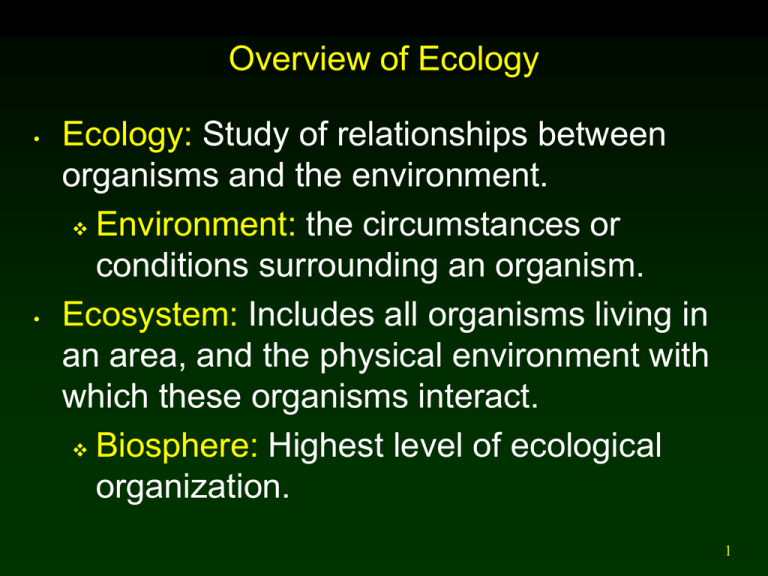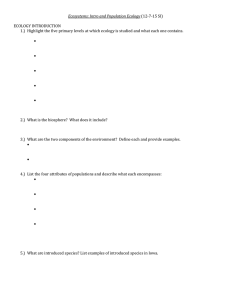Ecology
advertisement

Overview of Ecology • • Ecology: Study of relationships between organisms and the environment. Environment: the circumstances or conditions surrounding an organism. Ecosystem: Includes all organisms living in an area, and the physical environment with which these organisms interact. Biosphere: Highest level of ecological organization. 1 01_01a.jpg 2 01_01b.jpg 3 Nature and Scope of Ecology • Ecology: Study of relationships between organisms and the environment. Wide variety of approaches. Large temporal and spatial scales. Field Lab Observational Manipulative 4 Some fields of ecology Molecular Ecology Physiological Ecology Behavioral Ecology Landscape Ecology Restoration Ecology Human Ecology 5 ESA Journal Assignment • • • • • Go to the Ecological Society of America Click “science resources”, then “publications” Choose an volume of Ecology Click Ecology Click “current issue” Click “available issues” Click to open an Ecology volume’s table of content. Print & count the numbers of articles by these catagories: Individual, population, community, etc… Predation, competition, dispersal, energy flow, etc… Plants, animals (vertebrate or invertebrate), microbes. Terrestrial (land & soil) or aquatic (any water) Hand-in the Table of Contents indicating journal volume and your breakdown of each (due Thurs, Jan 25th). 6 http://info.hartwick.edu/biology/def_frogs/Index.html • 1. Identify a problem (for example, lamp does not work) • 2. List possible explanations (alternative hypotheses) based on your previous experience (what you already know); note: all of these hypotheses must be testable (no demons allowed!) • 3. Pick the most likely hypothesis (or the easiest one to test); this is called the "rule of maximum parsimony" (for example, the bulb is burned out) • 4. Make predictions based on the hypothesis: "if this hypothesis is true, then the lamp should work when I replace the bulb" • 5. Test the hypothesis by determining if the prediction is true: make an observation or do an experiment (for example, replace the bulb) • 6. Move on to test alternative hypotheses if your first one fails the test. • 7. Repeat until you are convinced that you have identified the most likely hypothesis (publish!) 7






